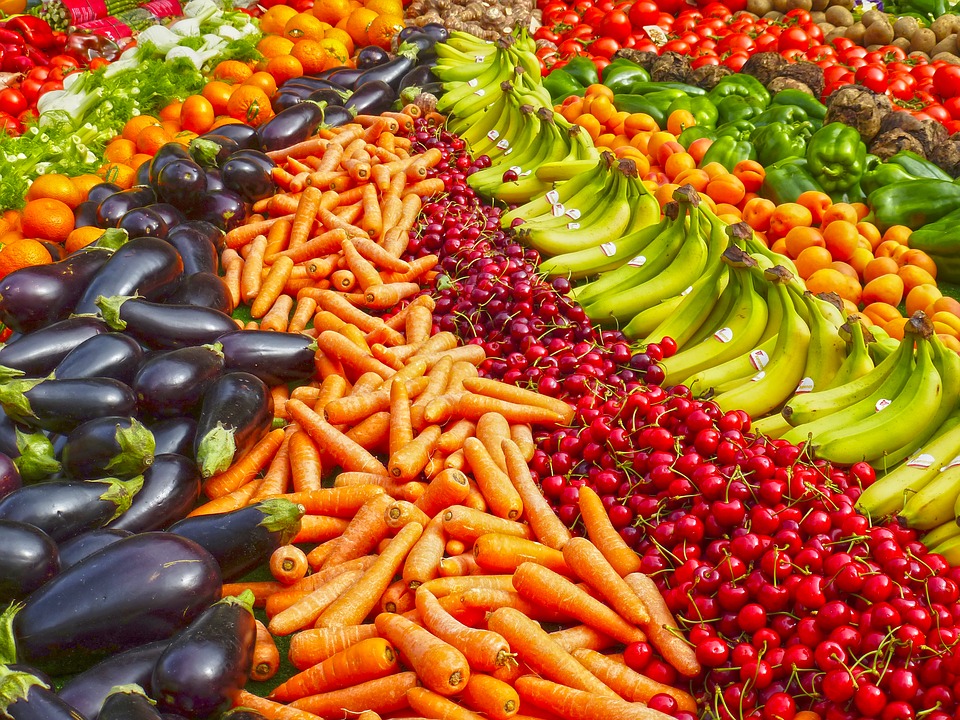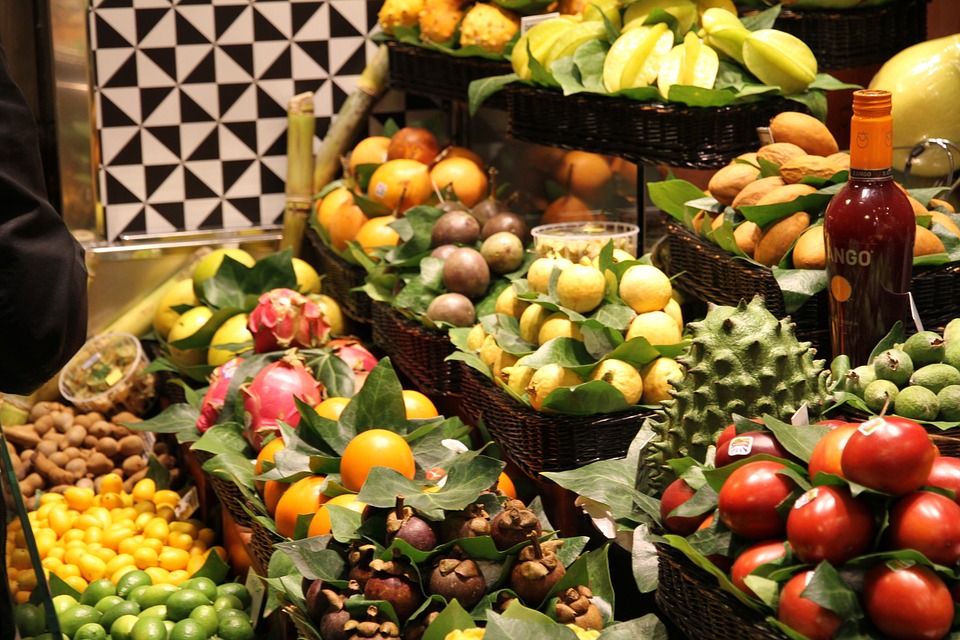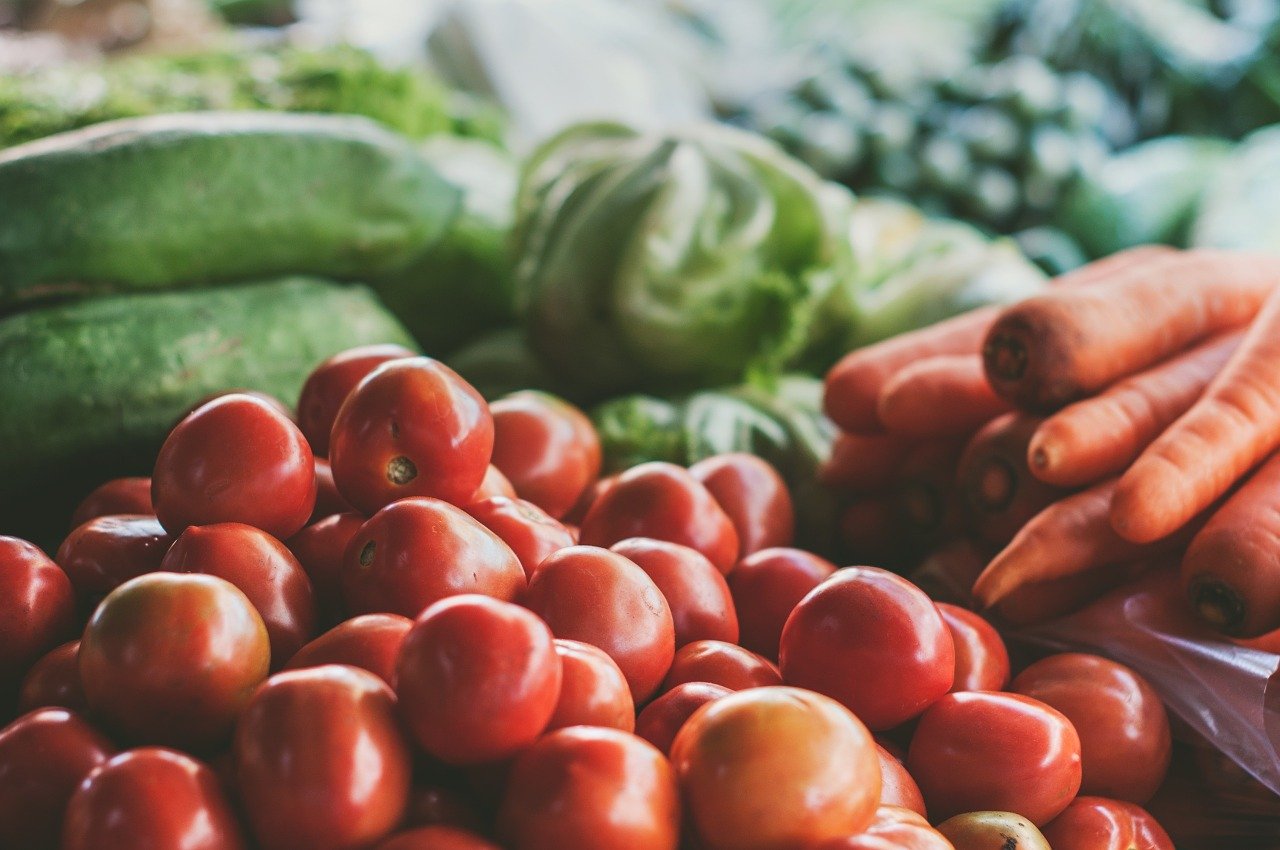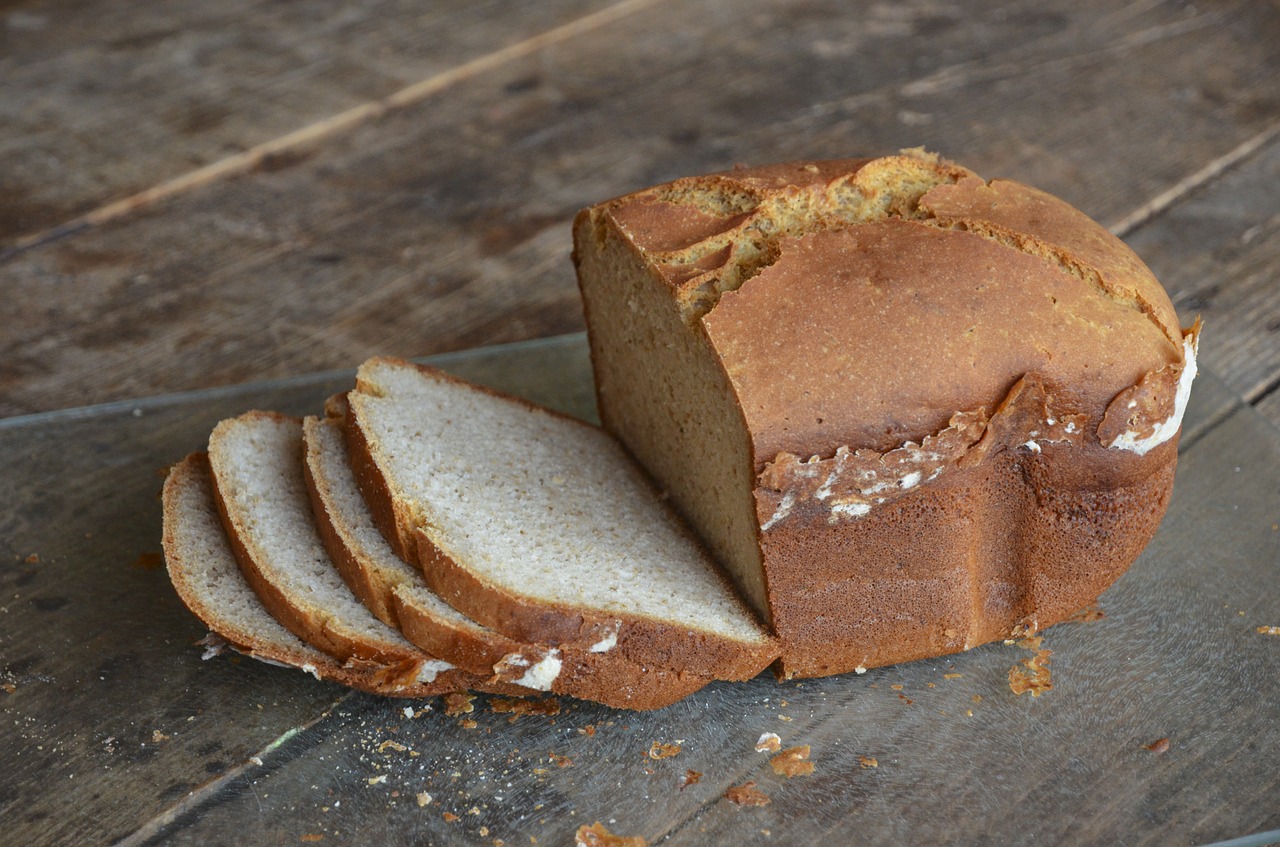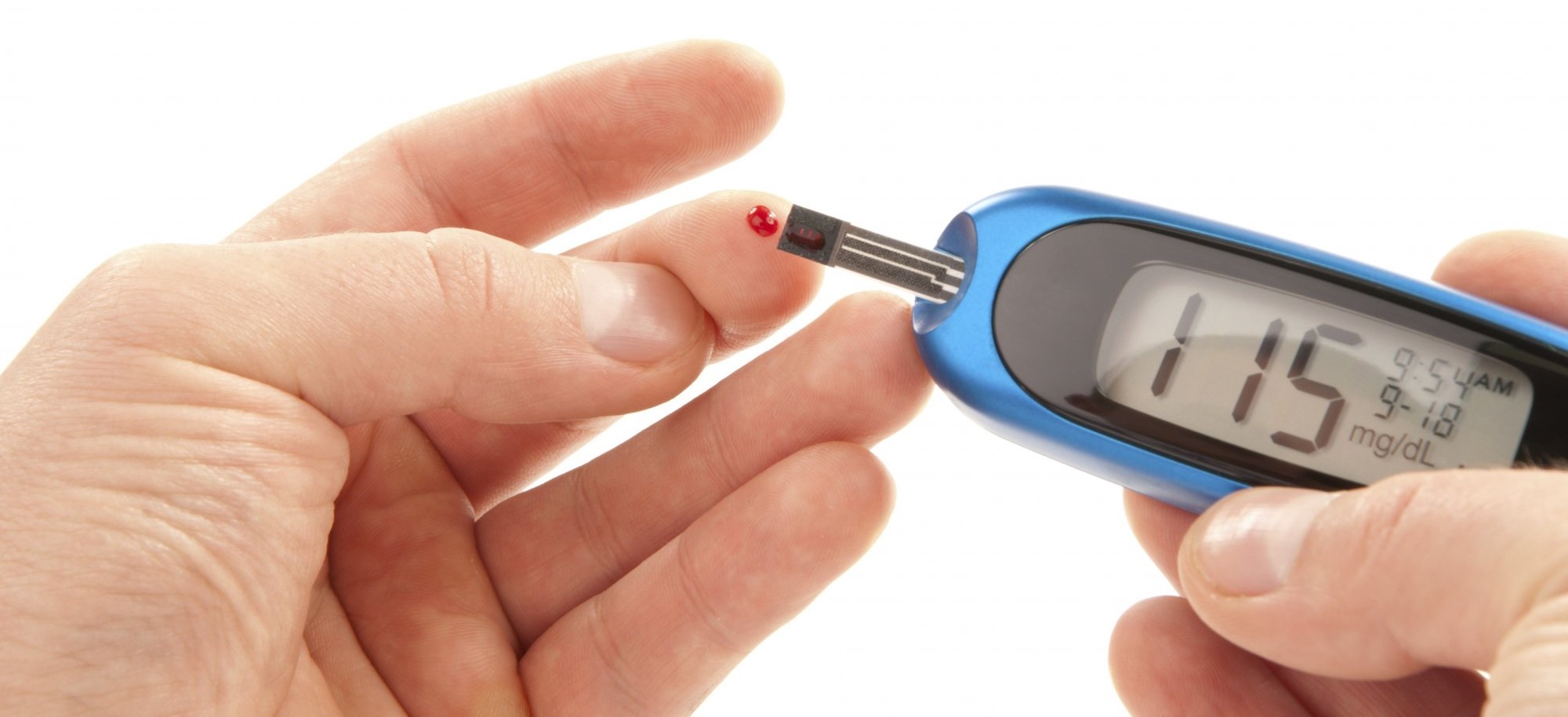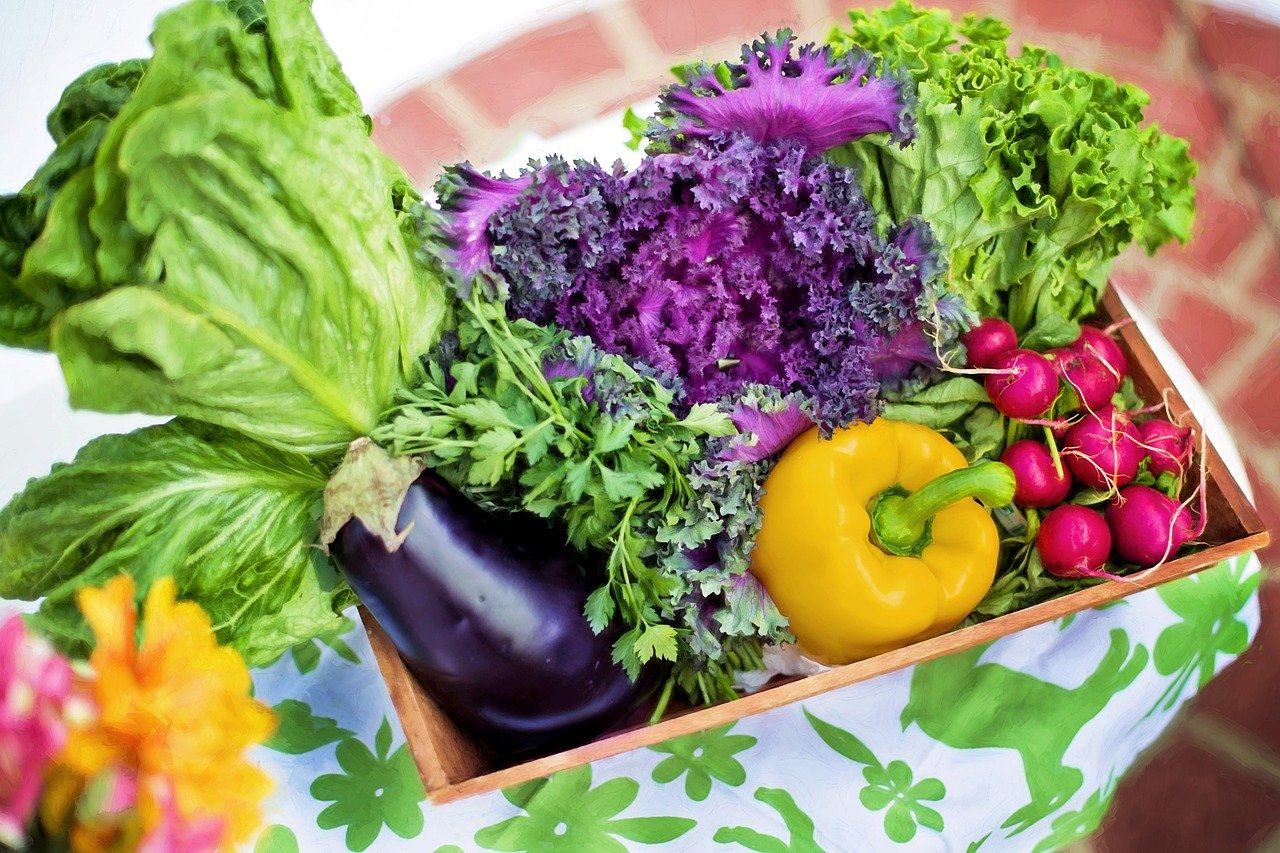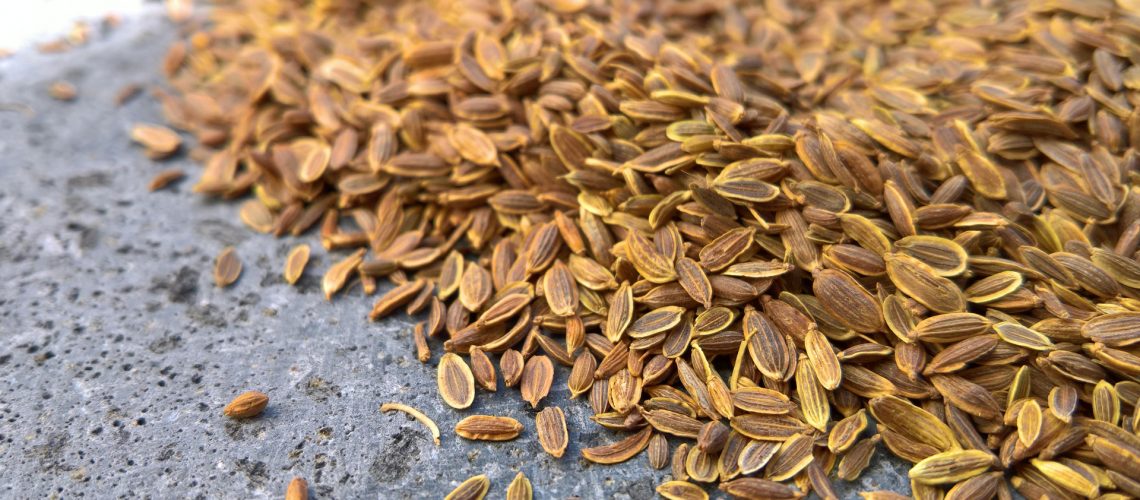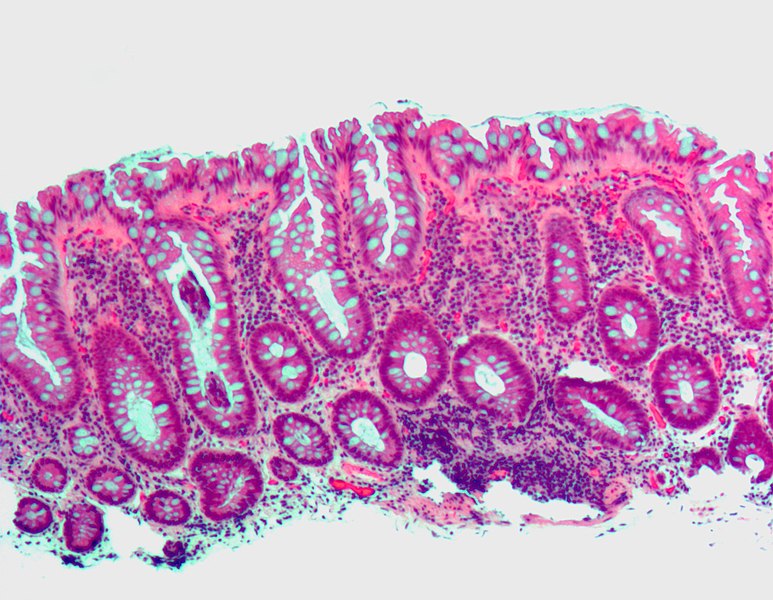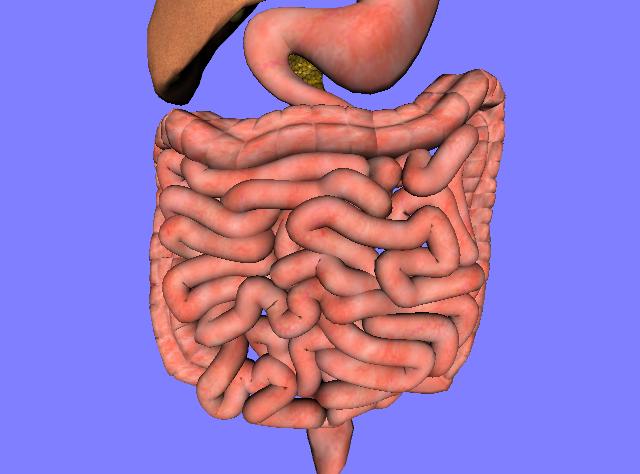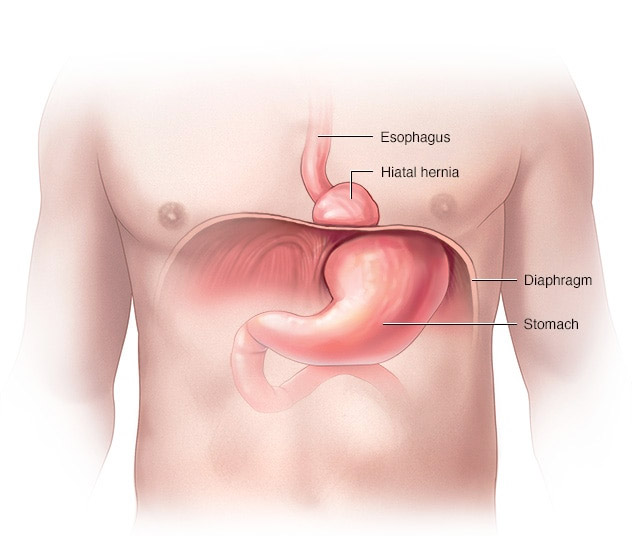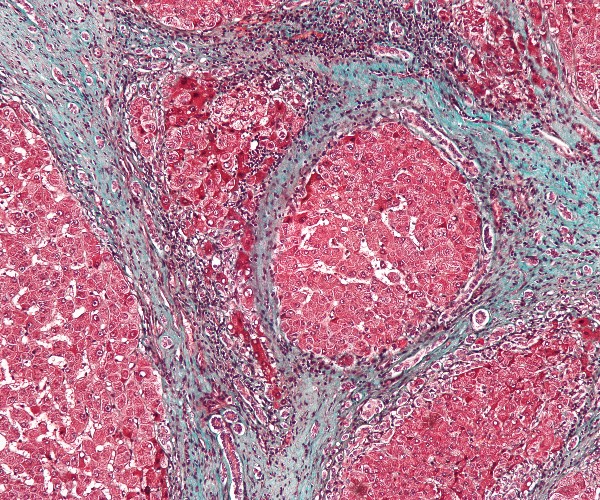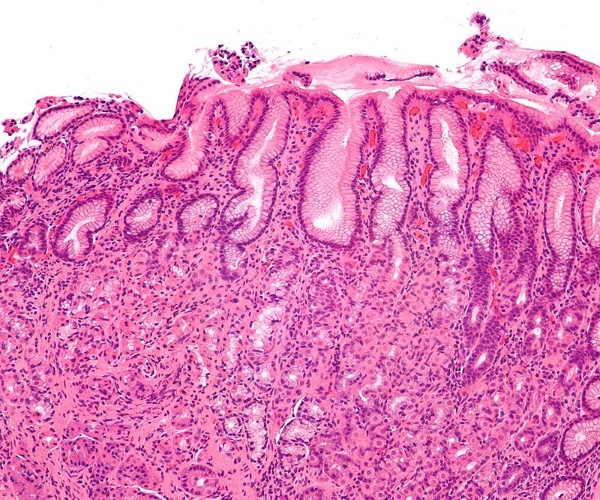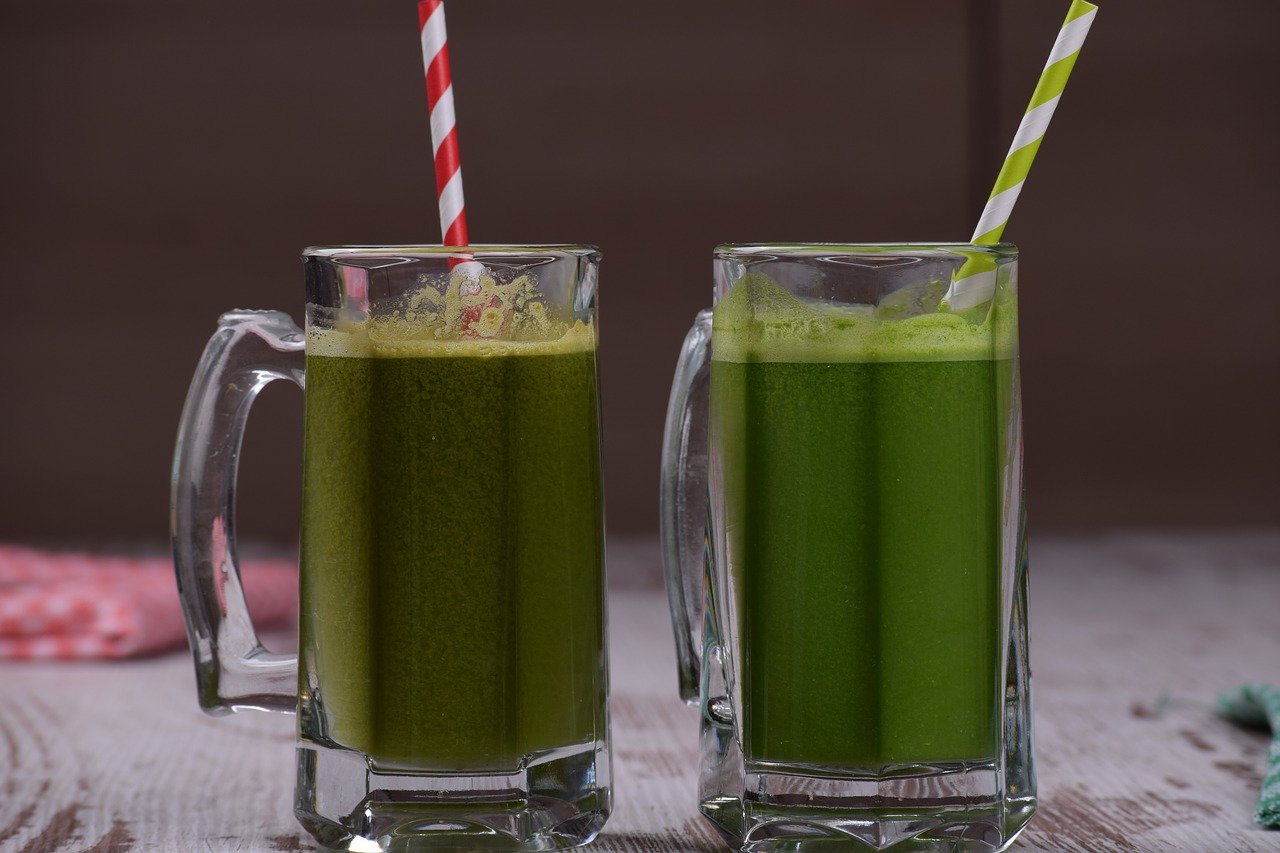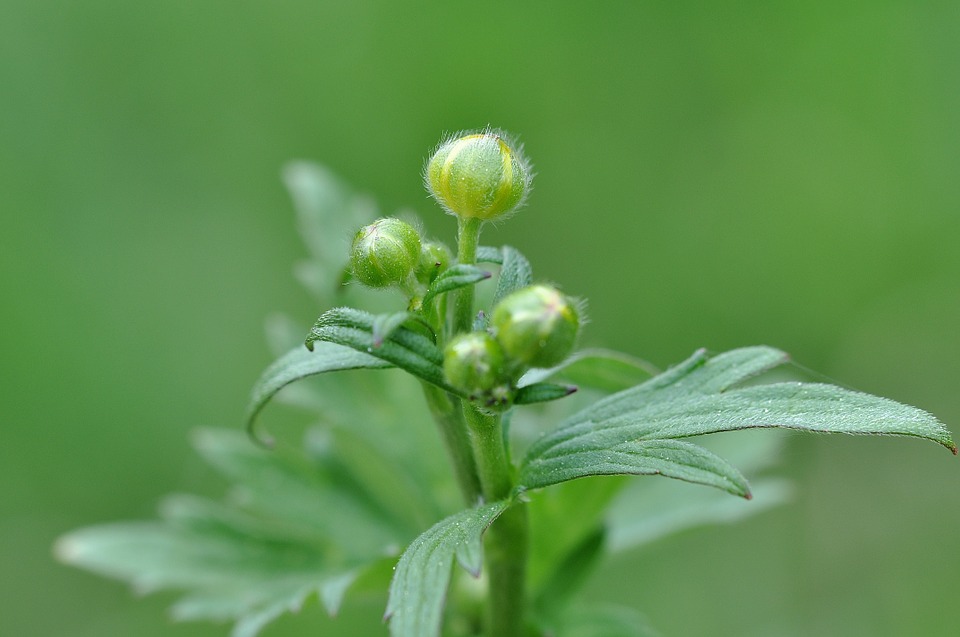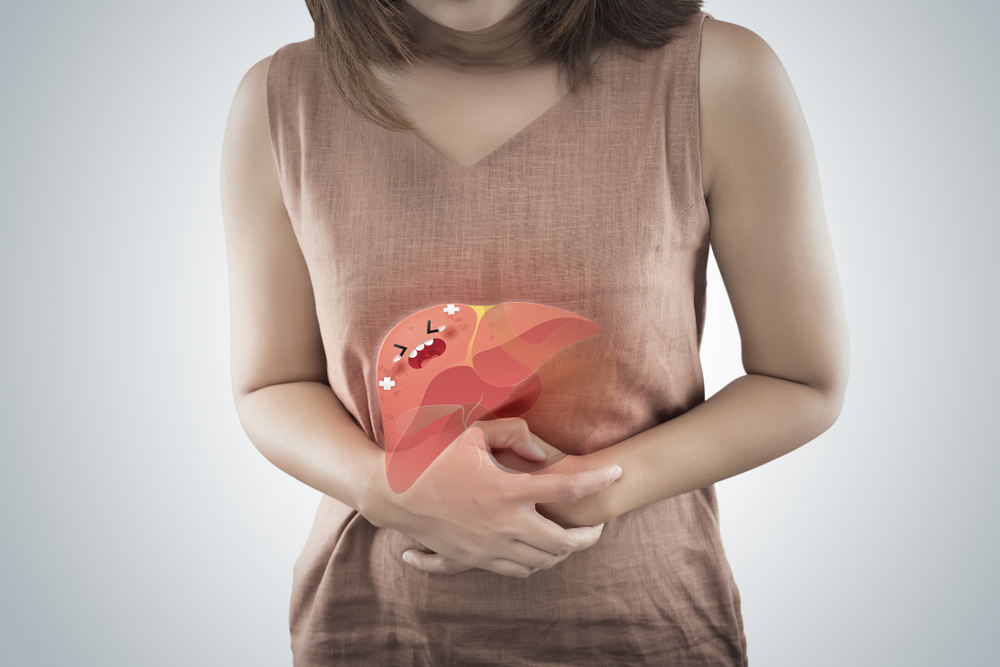If you smell it, you will have the impression of smelling a hybrid of fennel and anise. And you will also be struck by the rather intense smell, which some call ‘stinky.’ It is dill: an annual aromatic and medicinal plant, native to the Middle East, still little used in the West, although its culinary use is spreading. You may have happened to see on a nice slice of salmon, some very fine, blue-green, needle-like sprigs: that’s dill. Let’s get to know him better, then.
Botanical name. It already reveals the essence of this herb; in fact, to insiders it is known as Anethum graveolens L . A name derived from the Greek ‘ánethon’ and the Latin ‘anethum,’ in Italian precisely aneto, from ‘aníemi’ meaning “I cast out.” Subintending “the ailments” probably in reference to its therapeutic use since ancient times, we will discuss this later. While graveolens derives from the Latin ‘gravis, -e,’ meaning heavy, strong, and from the present participle ‘olens’ (‘olere’), smelling, thus referring to the intended aromatic scent that dill gives off. This explains the definition of smelly dill or stinky dill. In relation to its smell approaching or being confused with fennel, dill is also popularly known as ‘bastard fennel’. It must be said, however, that the binomial Anethum graveolens, now universally accepted, is due to Carl von Linné (1707 – 1778), a Swedish biologist and writer and considered the father of the modern classification of living organisms in the 1700s, who first cited it in his 1753 publication “Species Plantarum.”
In antiquity. It was said that it was already known: that’s right. The Talmud, a sacred text of Judaism, even mentions it, highlighting its widespread use and importance, as does the Ebers Papyrus, speaking of its therapeutic use among the Greeks, according to whose medical school it was able to prevent attacks of epilepsy or thwart nefarious spells by clutching a sprig of it in the left hand, while the Romans believed it could help boost physical strength to such an extent that gladiators added it in abundance to every dish and crowned their heads with it as a symbol of joy, while legionnaires treated wounds with burnt seeds to promote healing. The Egyptians, as evidenced by the finding of dried dill in some tombs, used it that they used it medicinally especially for its digestive and antiseptic properties. It is also mentioned in the Gospel according to Matthew in which we read: “Woe to you, hypocritical scribes and Pharisees, who pay the tithe of mint, dill and cumin and transgress the gravest prescriptions of the law: justice, mercy and faithfulness“, while in the Bible it is described as a valuable plant to the point of being used as currency to pay taxes. Again Aristotle and Theocritus, Virgil and by Plinyodore mention it as an herb between fennel and anise. In more delightful terms, Marcus Gavicius Apicius, a Roman gastronome, cook, and writer who lived between the first century B.C. and the first century A.D., used this herb as conveyed by history in many recipes, among them dill chicken. Apparently, Emperor Charlemagne consumed dill almost daily, believing it to be a powerful aphrodisiac and an excellent breath freshener, but it was also employed to combat witchcraft and for the preparation of love potions. It is later mentioned in the Middle Ages, in the book “Casa Cerruti.” “It is customary to sow dill in gardens, to mix it with other herbages, which it makes more flavorful and palatable. The best is one that is well verdant, tender and fresh. To the stomach that is easy on the winds it is very good for it. It also facilitates sleep, and it is said that this is why the ancients placed it in wreaths…“. In addition In sum, this plant has been used in the civilizations of the Mediterranean basin: by the Hebrew peoples as a vegetable; by the Egyptians for more than 5,000 years as a medicinal plant; by the Greeks and Romans for its fragrance and medicinal virtues.
Picture the plant. Anethum graveolens L. Belongs to the Umbelliferae family, more specifically the Apiaceae: has leaves consisting of several regularly arranged, filiform leaflets, blue-green in color; yellow flowers, appearing in mid-summer, collected in umbrella inflorescences with a stronger aroma than that of the leaves, but milder and fresher than that of the seeds and are a ‘strong’ lure for bees. The fruits are diachenes, also called schizocarpic dry fruits: they are very small, oval-shaped, flattened on the back, brown in color, with a smooth, glabrous surface, and contain small brownish oval seeds, similar to those of fennel and capable of germinating even three years after harvest. The seeds are also aromatic, wing-shaped, and once they reach maturity, between August-September, they split into two parts. The plant can reach a height ranging from 20 cm to one meter. Some say dill is poisonous; no, it is harmless to humans and pets, so much so that in the right doses and correct uses it has therapeutic properties. Perhaps this connotation comes from the fact that the leaves can be confused with hemlock, which is instead poisonous and deadly: so much so that a number of poisonings with this herb have gone down in history, foremost among them that of the Greek philosopher Socrates who drank hemlock after being sentenced to death by an Athenian jury, but it is suspected that Mozart and Beethoven also died of poisoning (but there is little evidence) or even that five popes, including Clement II in 1049 and John Paul I who died mysteriously after only 33 days of pontificate, were killed with hemlock but there are also more recent cases.
Origins. Native to the Middle East, India and Persia, today dill is also widespread as a wild plant in much of Europe, particularly in areas with fairly cool climates, from northern Italy to Sweden. It is rarely found below 600 meters, while on the highlands it grows up to 1,000 meters above sea level, in a habitat therefore between hilly and mountainous.
Kitchen. Among the most common uses of dill is for eno-gastronomic purposes. In fact, it is widely used in Germany, the British Isles, Eastern Europe, Scandinavia, and in Greece-famous in the composition of Tzatziki, a sauce made from Greek yogurt and cucumbers-while the seeds are used to flavor bread and the tops to flavor sauces, fish marinades, cheeses such as feta, legumes, oil, and vinegar. In China it is used in the preparation of Chinese dumplings, and in India and numerous other countries around the world, mainly in fish dishes. In Italy it began to be used in the 1980s with smoked salmon, which goes well with the flavor of dill, but also in salads, on boiled potatoes, in marinades, in sauce for fish, to flavor soups and gravies, and on grilled meat, to accompany yogurt, sour cream, and fresh cheeses. The seeds, which are very fragrant, are ideal for flavoring vinegar and preserves. Again, Germans and Hungarians combine the leaflets with other flavorings to make sweet-and-sour pickles; Scandinavians use it to flavor eggs, salmon, potatoes, and soups; and the leaves, fresh or dried, to flavor salads, fish, meats, and sauces while the seeds to flavor liqueurs and jams. Finally, dill oil can also be made from the seeds.
Growing dill. It does not present any particular difficulties, but some demands of the plant must be met:
- Climatic needs. It needs a mild climate, that is, it likes a warm and sunny environment, with spring temperatures up to being able to tolerate temperatures of a few degrees below zero, but in any case, it is preferable to shelter the plants in a greenhouse or otherwise protect them. Therefore, for growing dill, it is best to choose a sunny area of the ground (garden or vegetable garden) or balcony, but keep it away from strong winds and wet areas. So you have understood that it can be grown in the open field, where the plant becomes lush with ease, with rich and intense vegetation, reaching up to a meter in height, but also in pots.
- Irrigation. It depends on the mode of cultivation: in the open field, water supply is not necessary unless the season becomes excessively hot and dry when emergency irrigation is required, while in pots, irrigation will have to be provided especially during the summer flowering months. In pots, the size of the plant remains limited and does not reach great heights. Generally: in spring water 2 times a week, only when the soil has been completely dry for several days while in summer also every other day, watering in the early morning hours or after sunset.
- Grounds. Dill prefers soil with a sandy composition, a good supply of organic matter and a neutral or slightly basic pH. It should also be carefully prepared before planting with light background fertilization, using household compost or earthworm humus.
Planting. The ideal time is late winter-early spring, between March and April. It is done by scattering, burying the seeds with a rake about 2 to 3 cm deep, with a distance between rows of at least 40 cm. At emergence, the plants should be thinned keeping a distance of at least 5 cm, counting about 15-20 plants per square meter. Seeds should be covered with a light layer of potting soil, and after planting, the soil should be kept constantly moist but not soggy as excess water can lead to seed rot or death of young seedlings. After about 2 weeks after planting, new seedlings will appear, and if they are too crowded or close together, they should be thinned, removing the less developed and more fragile ones.To avoid hybridization, do not sow dill in the vicinity of wild fennel; the two species, in fact, are interfertile, that is, one can take on the odor of the other, keeping the soil free of weeds. Dill can be grown to consume the whole plant, as if it were a vegetable, in which case the plants should be cut off at the base when they exceed about twenty centimeters in height, or for seed collection: the seedlings, if that is the purpose, should be kept upside down over a tarp, in a sunny position until the flower heads begin to take on a brown color, to complete ripening.
Pruning. To encourage stumping, as is done with basil or thyme, it is necessary to manually top or prune the twigs about 20 to 30 cm above the soil surface. Instead, to further extend the leaf harvesting period, the inflorescences should be topped as soon as they appear because in order to bring the seeds to maturity, they take nutrients away from the plants.
Harvesting and storage. Of the dill, the green parts can be harvested in pre-flowering, around June, allowing them to dry in the shade and then storing in paper bags. While the seeds, which are harvested in late summer when the plant begins to yellow and the flower umbels to dry, are obtained after the inflorescences are threshed. How? Small bunches are made up and, as is done for oregano and as mentioned above, they are hung upside down in a paper bag, leaving them to dry a few days in a shady, airy place after which the seeds must be released by shaking the inflorescences directly into the bag. To have fresh dill throughout the year, it is advisable in the fall to cut a good amount and place the shredded leaves in the freezer, where the intense fragrance will keep well enough, to be used once thawed only for hot dishes.
***
Crop care. The main one is weed defense, especially in the early stages of growth, which can be avoided by natural packing with straw that also has the purpose of protecting plants from frost, excessive heat, and giving the soil a way to preserve the right degree of moisture for longer. This should be placed between the young seedlings when they have reached 15-20 cm in height.
Pests and diseases. Dill can be attacked especially by slugs and snails, which can destroy the crop in a short time. Beer traps can be set up against these pests or chimney ash can be distributed at the foot of the collar. To prevent the collar from rotting, the growing medium should not be soaked, and to limit damage caused by late hailstorms, young plants should be protected with hail nets or tarpaulins. Finally, to get strong, lush dill plants, remove periodically, either manually or with a hoe, weeds growing near and between dill plants.
Bibliography
- James Nicolini, Motta Botanical Encyclopedia. Volume One, Milan, Federico Motta Editore, 1960, p. 122.
- Sandro Pignatti, Flora of Italy. Volume Two, Bologna, Edagricole, 1982, p. 206, ISBN 88-506-2449-2.
- D.Aeschimann, K.Lauber, D.M.Moser, J-P. Theurillat, Flora Alpina. Volume One, Bologna, Zanichelli, 2004, p. 1104.
- 1996 Alfio Musmarra, Dictionary of Botany, Bologna, Edagricole.
- Eduard Strasburger, Treatise on Botany. Volume Two, Rome, Antonio Delfino Editore, 2007, p. 856, ISBN 88-7287-344-4.
- Judd-Campbell-Kellogg-Stevens-Donoghue, Systematic Botany-A Phylogenetic Approach, Padua, Piccin Nuova Libraria, 2007, p. 508, ISBN 978-88-299-1824-9.
- F.Conti, G. Abbate, A.Alessandrini, C.Blasi, An annotated checklist of the Italian Vascular Flora, Rome, Palombi Editore, 2005, p. 53, ISBN 88-7621-458-5.




